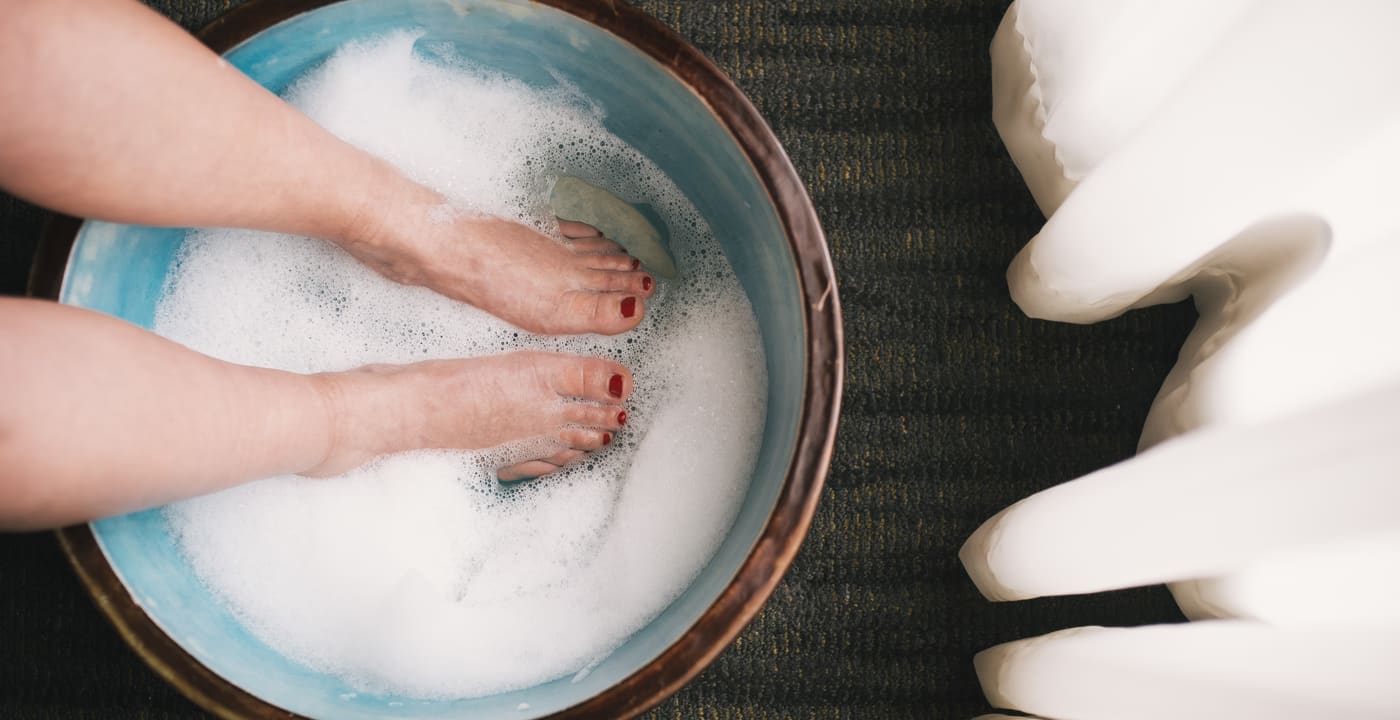Podiatrist tips to give foot pain caused by weight “the boot”

Whether we’re on them all day for work or just taking a long walk to get exercise, at some point, we all experience aching feet. And when it comes to excess weight, no part of the body bears more of it than our feet. The good news is that there are ways to relieve your feet of at least some of the strain.
MultiCare Podiatrist Gregory Webb, DPM, FACFAS, spoke about weight and foot care at a recent Bariatric Surgery Support Group and explained that being overweight increases your risk of ‘wear-and-tear” foot problems, from tendonitis to arthritis to heel pain. “As little as one pound above your ideal weight can increase pressure in your hips, knees and ankles by as much as eight pounds,” he explained.
In normal walking, you transmit three to six times your body weight through your foot, Dr. Webb says. “By losing five pounds, you potentially may be transmitting 30 pounds less through the foot and ankle,” he adds. “So it’s quite dramatic.”
Those with a BMI of over 30 also double their risk of a severe ankle fracture, according to Dr. Webb. “Simply walking up a flight of stairs or an incline can increase pressure on the ankle by four to six times.”
To combat those risks and reduce pain, Dr. Webb recommends exercises to strengthen foot muscles. They can be as simple as scrunching up a towel with your toes, splaying your toes, flexing your foot or rolling a small ball or bottle beneath your arches while seated.
Well-fitted and designed shoes and socks also play a huge role in foot health and comfort, Dr. Webb says. Because every company uses its own measurements, you should never buy a shoe by size alone, but instead try them on.
It’s not just the shoes themselves that can be different. Most people don’t realize their shoe size likely increases as they get older, especially if they are overweight. It’s not that your foot bones grow, but the ligaments stretch, and arches tend to flatten. That leads to plantar fasciitis, a painful condition that Dr. Webb calls “almost an epidemic in this country.”
To protect your feet, choose shoes that fit well and have some arch support. He recommends brands like Clark and Merrill, in addition to running shoes. “Most people have shoes that are too short,” he says. “You should have the width of your thumb or at least finger between the end of your toe and the shoe.”
Equally important is replacing your shoes when they get worn. Most of us look at the top of our shoes as an indicator of wear. “But it’s the portion between your foot and the ground that is the most important,” Dr. Webb says. In adults, that typically wears out well before you can spot visible wear on the top of the shoe.
One way of testing wear is to put your shoes on a counter and look at them. If they lean one way or the other, it’s time to replace them.
The truth is, we don’t always choose our shoes based on comfort. Sometimes, fashion comes into play, Dr. Webb acknowledges. In that case, “choose your battles.” If you want to wear high heels for a night on the town, make sure you’ve worn more comfortable shoes during the day. If you want to hit the beach or pool in non-supportive flip flops, make sure it’s limited to that time. “Don’t challenge your feet with flip flops all day long.”
Likewise, don’t spend too much time barefoot or in slippers, he says, because your arches need support — especially if you are overweight.
Once you’ve got the right shoes, consider your socks. Avoid cotton if you deal with sweaty feet. Instead opt for wool or a synthetic like nylon or polypropylene that will wick away moisture and help prevent blisters.
Dr. Webb also recommends a daily foot inspection. “Looking at your feet and your toes daily can be very, very beneficial to get on top of something early,” he says. Applying a cream or lotion to avoid dry, cracked feet is fine, but never put cream between your toes, where the moisture can promote fungal infections.
And while good foot care is important to everyone, if you are diabetic, it’s even more critical. Dr. Webb recommends consulting with a podiatrist or nurse practitioner specializing in podiatry for foot care advice if you are diabetic and not yet experiencing problems.
If you are diabetic with a chronic foot wound or other diabetic foot issue, have a foot deformity such as a bunion that is affecting shoe fit, a toenail issue such as an ingrown nail, or a foot or ankle injury or sprain, it’s time to make an appointment with a podiatrist, he suggests.
By following Dr. Webb’s tips and getting medical help when needed, you stand a good chance of giving foot pain the boot.
Learn more about the Weight Loss Support Group, which meets monthly. Learn more about podiatry services at MultiCare or to find a podiatrist near you.




